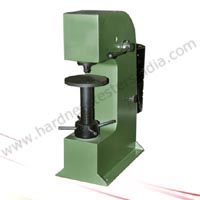

M.M.
Engineers is a leading manufacturer, supplier, and provider of
high-quality Brinell Hardness Testers in Mumbai, Navi Mumbai, and Thane. Our
Brinell Hardness Testers are precision instruments designed to measure the
hardness of materials, offering accurate and reliable results in various industries. As trusted
wholesalers and dealers, we provide durable and efficient testing machines
suitable for a wide range of applications.
Brinell hardness testers offer several advantages in materials testing and
quality control due to their ability to provide accurate and reliable measurements of a
material's hardness. Brinell tests create relatively large and deep indentations in the
material's surface, which makes them less sensitive to surface roughness, texture, or minor
imperfections compared to smaller indentations produced by some other hardness testing methods.
This is particularly advantageous when testing rough or coarse-grained materials.
Brinell hardness testing is suitable for a wide range of materials, from very
soft metals like lead to extremely hard materials like hardened steel. It is effective in
testing both metallic and non-metallic materials. The test can be performed on samples with
varying material properties because it typically involves taking multiple indentations at
different locations on the specimen, allowing for the assessment of material homogeneity.
In addition to our top-tier products, M.M. Engineers offers expert services including installation, calibration, and maintenance for your Brinell Hardness Tester. We also supply premium spare parts to ensure your equipment operates at its best for years. Whether you're a manufacturer, trader, or service provider, M.M. Engineers in Mumbai, Navi Mumbai, and Thane is your go-to partner for high-quality Brinell Hardness Testers and reliable after-sales support.
